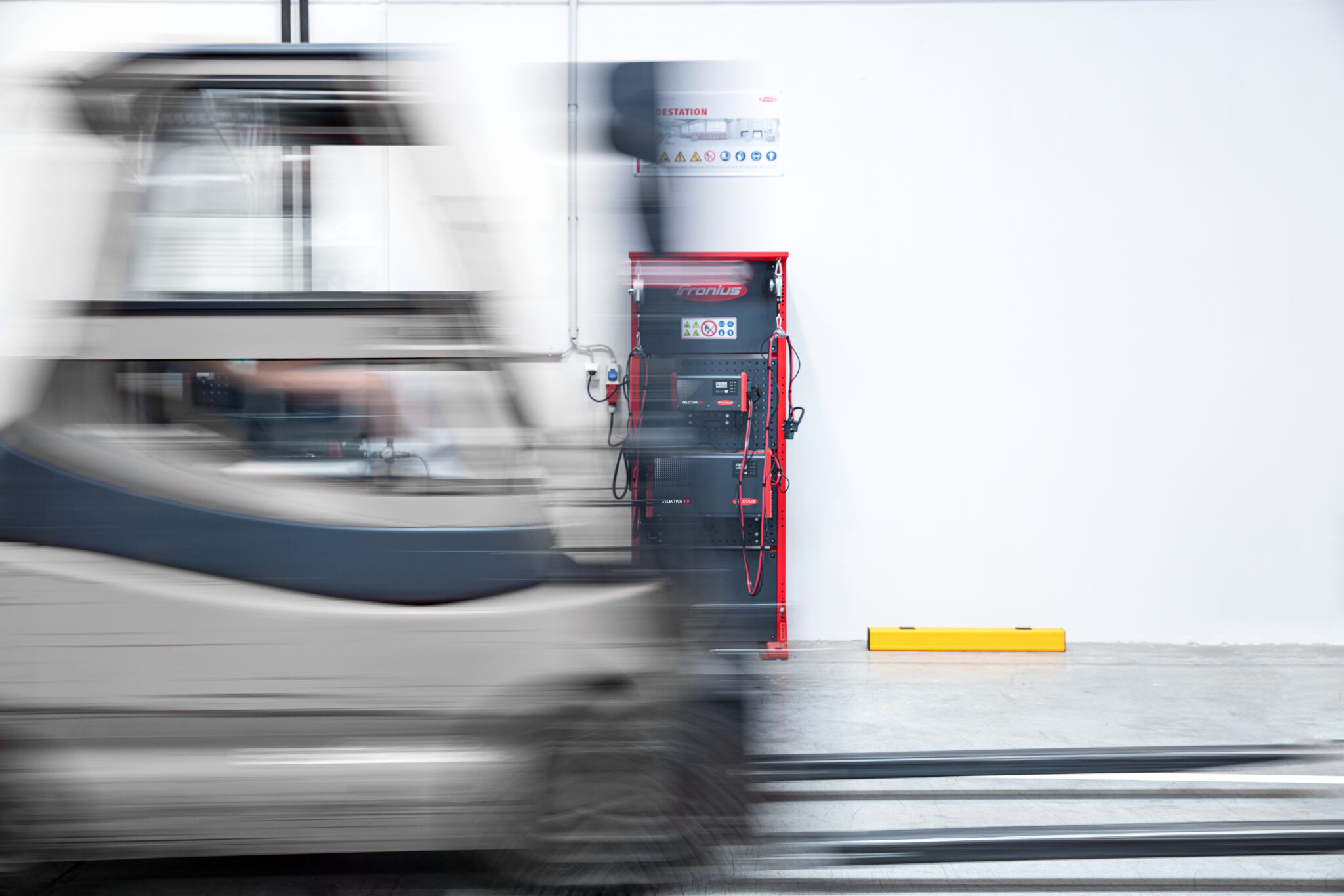Moelven Edanesågen AB, a sawmill based in Edane, in western Sweden is looking to reduce emissions and has ordered its first fully electric lift truck, the Konecranes E-VER electric forklift. The order was made in December 2021 and it arrived in May 2022.
Established in 1899, Moelven Group produces building products and systems in Norway and Sweden for the construction industry around the world. Its sawmill in Edane, central west Sweden, is one of its biggest facilities. As part of its operations, Moelven is using forklifts to move raw wood, equipment and products as they offer outstanding efficiency, safety and flexibility. Moelven wanted to expand its forklift fleet for more site capacity, and it has chosen Konecranes again.
“Moelven likes the new Konecranes E-VER electric forklift because its battery technology and zero emissions perfectly align with their sustainability goals,” says Håkan Lorén, District Manager for local dealer N.C. Nielsen. “In addition, its high quality, durability and eco-efficiency underline our own long-term commitment to the environment in the machines we offer to our customers.”
“Moelven bought their first lift truck from Konecranes in the 90s and have been with us ever since,” says Daniel Sjöstrand, Sales Director for Konecranes Lift Trucks. “Now, including the Konecranes E-VER electric forklift, they have 34 Konecranes lift trucks across their Scandinavian operations. N.C. Nielsen has been essential in this relationship, always providing excellent support when needed. We’re proud that Moelven is now ready to experience our next generation of lift trucks.”
The new lift truck at the Moelven site is a Konecranes E-VER 13.6-600C forklift, a sturdy lifting machine with a capacity of 13,600kg and a fully electric drivetrain, powered by lithium ion (Li-ion) batteries for energy efficiency and fast charging.
“A battery management system ensures the power source is optimised for performance and safety,” says Lisa Martinsson, Senior Project Manager for Electric Program for Konecranes Lift Trucks. “Smart systems integrate the E-VER with TRUCONNECT Remote Monitoring, a data collection system providing an almost real-time view of truck usage, for easier operations and maintenance planning.”
A range of special features maximise ergonomics, stability and safe handling in a sawmill environment, including an OPTIMA cabin for comfort and visibility, with mini-wheel steering and an air-cushion seat, mud flaps, a cross log bracket, fork levelling, central greasing, and extra external lights.
This new order is part of Ecolifting, Konecranes’ vision to increase its handprint – meaning the beneficial environmental impact that can be achieved with our product and service portfolio – while reducing customers’ carbon footprints. From eco-optimising diesel drives to hybridisation and fully electrified fleets, we will continue to do more with less.








